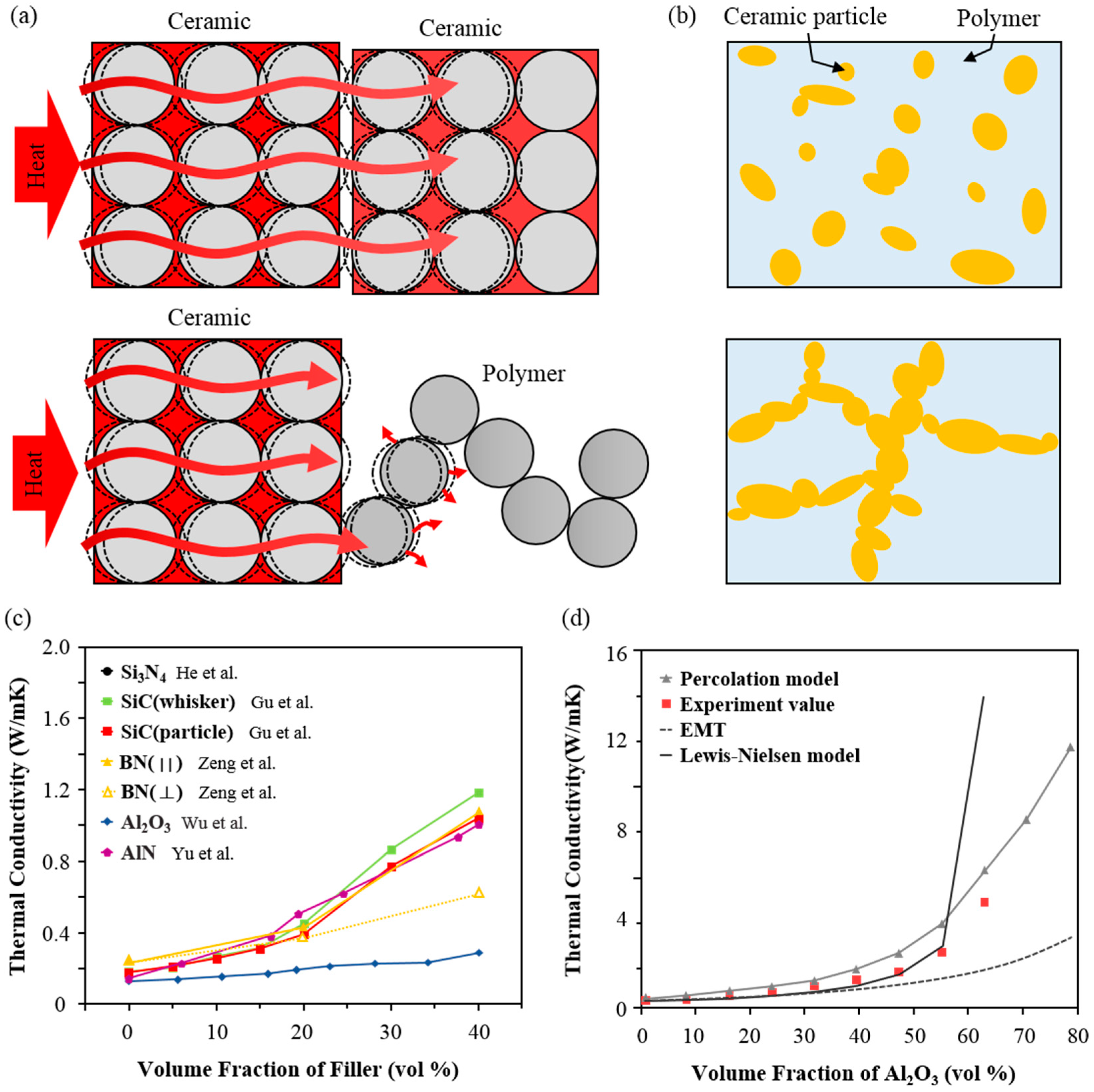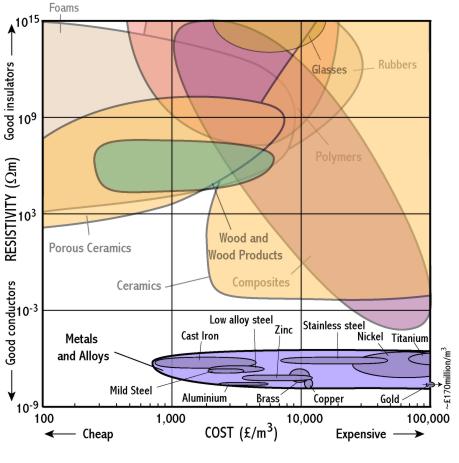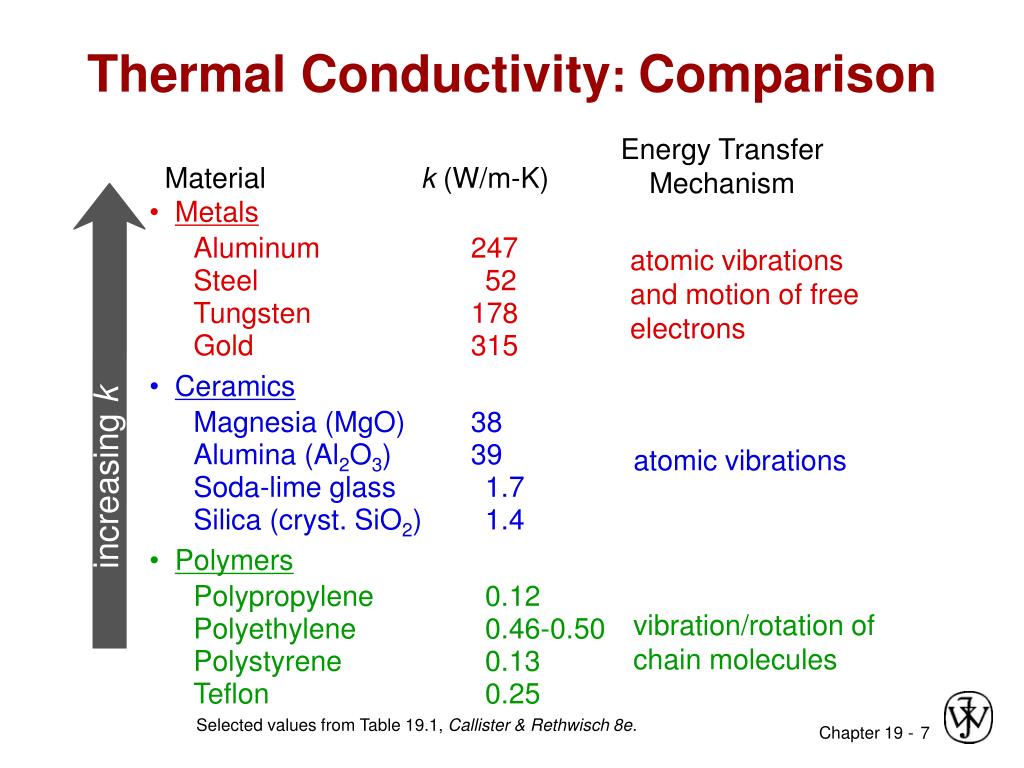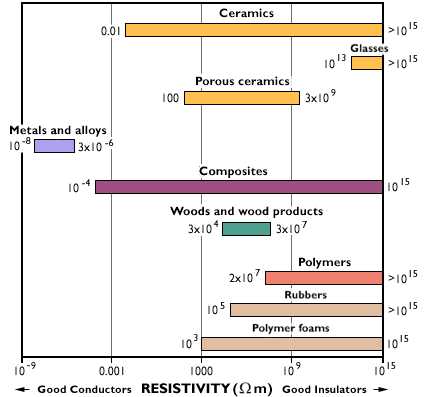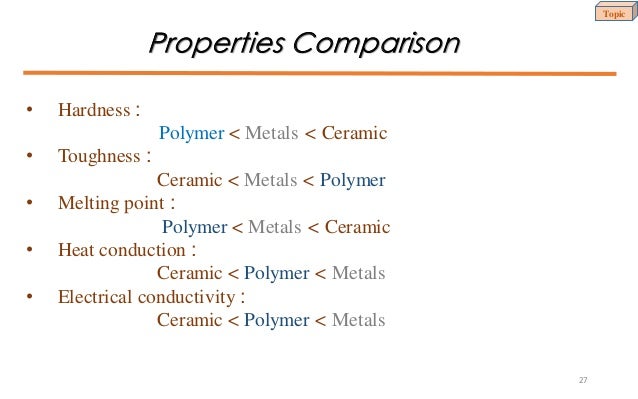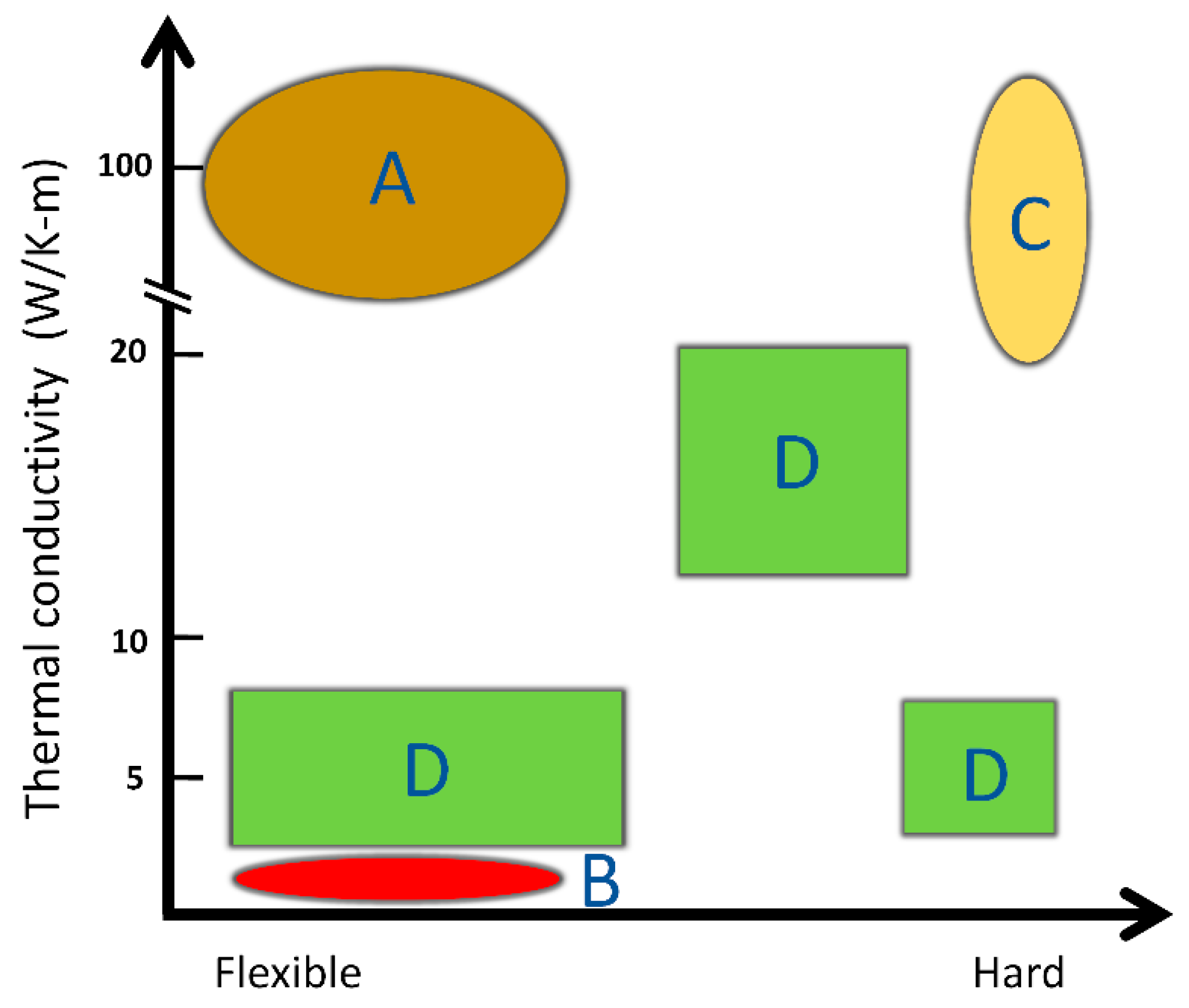Thermal conductivity k is the quantity of heat transmitted due to an unit temperature gradient in unit time under steady conditions in a direction normal to a surface of the unit area.
Thermal conductivity metals ceramics polymers.
However bulk polymers usually have low thermal conductivity 0 1 0 3 wm 1 k 1 due to the presence of defects such as polymer chain ends entanglement random.
Is a measure of a materials ability to pass heat through it.
While heat flow in materials is often a complex process even small improvements in the thermal conductivities of polymers can have a large technological impact.
Poor thermal conductors resist heat flow and obtain heat slowly from their surroundings.
Tions as seen in their ratio is greater for low thermal conductivity materials like polystyrene and polytetrafluoroethylene than for the higher conductivity materials such as ceramic and glasses.
Calculate overall heat transfer coefficient.
Increasing thermal conductivity the team is now looking at making composites that combine the new technique with several other heat dissipating strategies to further increase thermal.
The ratio for the low conductivity polymers is about 0 44 while that for somewhat more conductive glasses and ceramics in 0 80.
With the exception of glasses ceramics usually cannot be reshaped easily.
Thermal conductivity k is used in the fourier s equation.
Materials with a high thermal conductivity can effectively transfer heat and readily take up heat from their environment.
Asked jul 25 2020.
Generic limestone r is relatively pure polycrystaline calcite solidity is the quotient of the solid grain volume divided by the bulk volume and k is thermal conductivity in w m 1 k 1.
Compare metals polymers and ceramics on a chart or table using the following properties and the ratings low high and highest.
Many new combinations include ceramic fibers in metal or polymer matrix.
Availability of these polymers can expand the plastics industry by partially replacing metals and ceramics in heat transfer devices and systems leading to energy and cost savings.
They usually have lower electrical and thermal conductivity higher stiffness good resistance to corrosive environments and lower fracture toughness than metals.
Density ductility hardness corrosion resistance hardness thermal conductivity electrical conductivity wear resistance.

